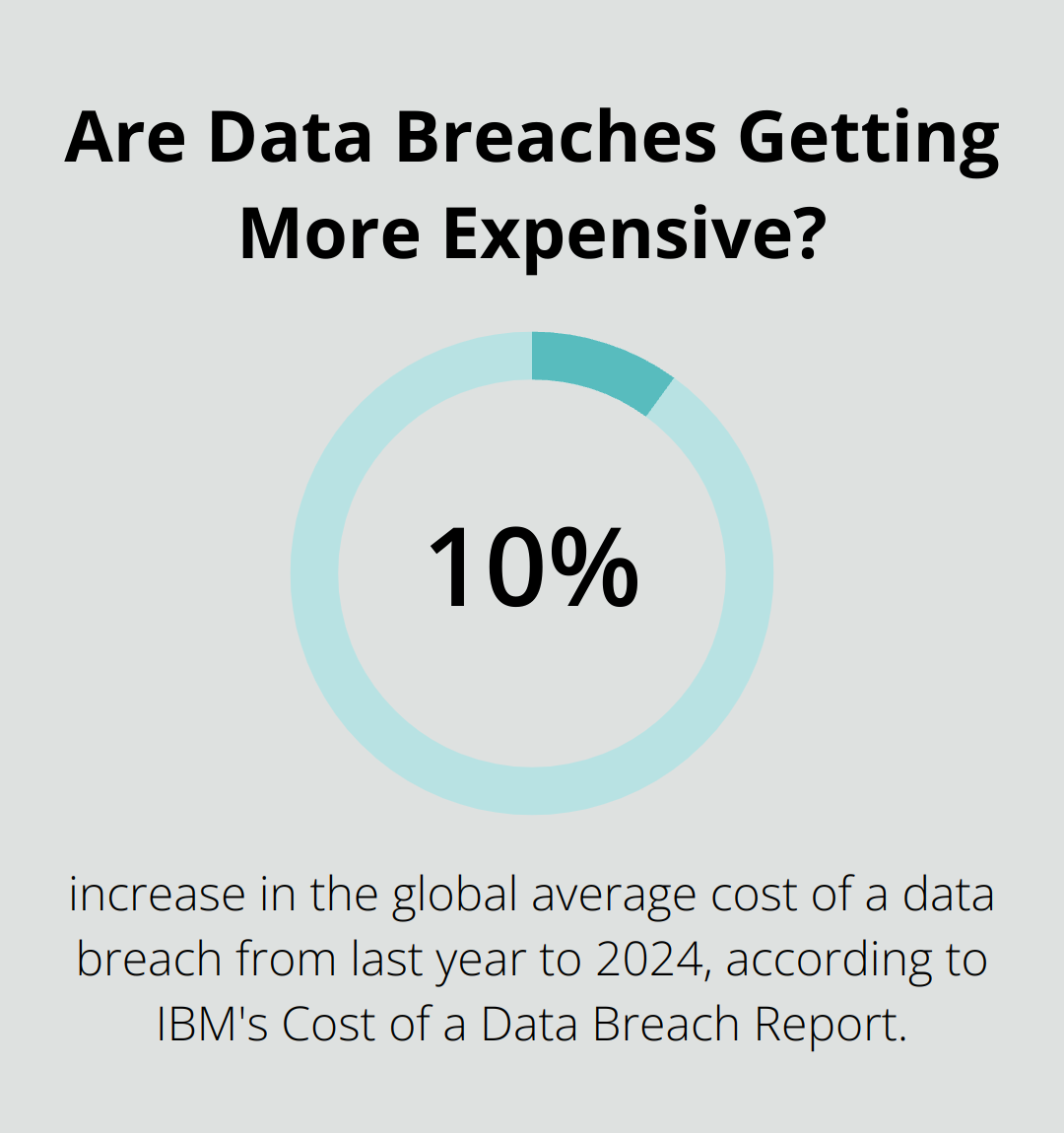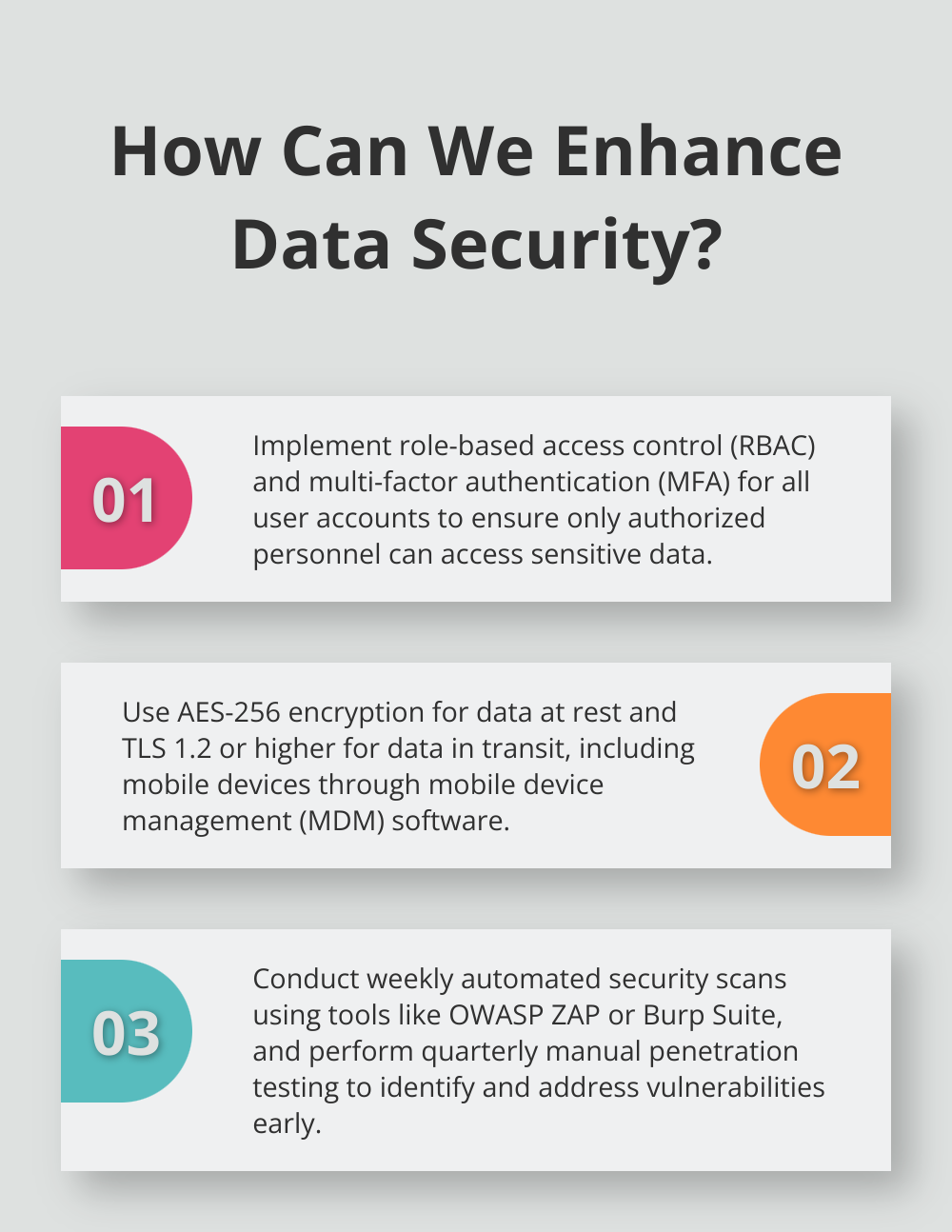HIPAA compliance in software development for healthcare—buzzword bingo? Maybe. But seriously, keeping patient data safe while dodging those hefty penalties? No joke. At ScriberJoy, we know the drill; it’s like navigating a maze blindfolded. This guide is your map through the labyrinth—covering the must-haves of a HIPAA compliance checklist, with some nuggets of wisdom on how to weave these standards into your coding life. So buckle up, it’s not just paperwork—it’s about not getting a call from your lawyer saying, “We have a problem.
What is HIPAA and Why It Matters for Your Software
The Essence of HIPAA
HIPAA-sounds like a tech buzzword tossed around like confetti, right? But it’s actually the Health Insurance Portability and Accountability Act, a heavyweight U.S. law laying down the law for how you handle sensitive patient data. If you’re a developer knee-deep in healthcare apps, HIPAA compliance isn’t just a nice-to-have-it’s your golden ticket.
The Three Core Rules of HIPAA
HIPAA’s got three big guns:
- The Privacy Rule: Your playbook for using and disclosing health info like a pro.
- The Security Rule: Sets the tech standards-because unsecured data is like leaving the vault open.
- The Breach Notification Rule: A must-do list for when the patient data ship springs a leak.
The High Stakes of Non-Compliance
Pretending HIPAA’s just a suggestion? Brace yourself for chaos in business. In 2023, there were over 133 million records breached-yes, millions, with over 373,788 records compromised every single day. Fines? They’re brutal. Up to $2,067,813 per slip-up. Just ask L.A. Care Health Plan about their $1.3 million slap on the wrist back in 2023-a serious wake-up call.
Practical Steps Towards HIPAA Compliance
Want to dodge those landmines? Here’s the roadmap:
- Appoint a HIPAA Privacy Officer (think of them as your compliance Yoda).
- Regular audits-because knowing where data hides is half the battle.
- Gear up with solid admin and tech shields to guard electronic Protected Health Information (ePHI).
Adapting to HIPAA’s Evolution
HIPAA’s not carved in stone. The OCR Director’s been dropping hints about updates rolling in by late 2024 or maybe early 2025. So, keep your ears to the ground to keep your software in the clear. Tech like AI (only if it suits the HIPAA vibe, obviously) could be your watchdog-monitoring data like a hawk and catching shady stuff before it hits the fan.

HIPAA compliance isn’t just about skirting fines-it’s about building trust with patients and keeping your name golden in the healthcare arena. This isn’t checkbox-ticking; it’s a blueprint for crafting secure, ethical software in the health sector. Moving ahead, dive into the essential elements that belong on your HIPAA compliance checklist.
What Should Your HIPAA Compliance Checklist Include?
Building a HIPAA compliance checklist isn’t just about ticking boxes – nah, it’s about building an impenetrable fortress around patient data. So, let’s break it down. Here’s what your checklist should have, zooming in on steps you can get rolling on… like, right now.
Risk Analysis: Your Primary Defense
Kick things off with a thorough risk analysis. The Security Risk Assessment Tool is your go-to – it’s like having a digital Sherpa guiding you through the security risk assessment journey with a simple, wizard-based approach. You gotta keep running those regular system scans for vulnerabilities. Tools like Nessus or OpenVAS? They’ll do the trick for automated scans. But hey, don’t just focus on the software stuff – think physical security too. Like, are your servers chilling in a secure, locked location? And who’s actually walking in and out of these areas?
Access Control: Differentiate User Privileges
Time to get your role-based access control (RBAC) game on. This system’s your key to ensuring users only have the access they need. Seriously, an accountant shouldn’t have the same pass as a physician. And let’s not forget about multi-factor authentication (MFA) for every single user account. Multi-factor authentication can zap almost all automated cyberattacks – boosting the healthcare sector’s security posture like nobody’s business.
Encryption: Secure Data Everywhere
Encrypt that data – whether it’s just sitting there or on the move. For data at rest, roll with AES-256 encryption. Once the data’s on the move, make sure it’s wrapped up in TLS 1.2 or higher. And don’t let mobile devices slip through the cracks – if folks access stuff from their smartphones or tablets, use mobile device management (MDM) software to enforce rock-solid encryption policies.
Audit Trails: Verify Every Action
Let’s talk audit trails. You want detailed logs for every access and change to patient data. Use a centralized log management system (think ELK Stack or Splunk). Set up alerts for anything fishy – like, multiple failed login tries, bizarre access patterns, or whopping data transfers.
Business Associate Agreements: Vet Your Partners
Hey, if a third party’s dealing with PHI, they need a Business Associate Agreement (BAA). This includes cloud services, email providers, even IT support folks. Keep a list of all your BAAs and give ’em a yearly review. Make sure they’re in line with the latest HIPAA requirements.

As you trek along your HIPAA compliance path, the next biggie is weaving these checklist items into your software development process. This way, compliance becomes part of your product’s DNA, not just an afterthought.
How to Implement HIPAA Compliance in Your Software Development
Secure Coding: Your Foundation for Compliance
So, you’re diving into secure development-good move. Kick things off with a secure development lifecycle (SDL). Threat modeling? Do it before touching a single line of code. Static code analysis tools like SonarQube or Checkmarx? Yeah, those are your new best friends for catching vulnerabilities early on. And seriously, don’t reinvent the wheel-use vetted libraries for things like cryptographic functions and input validation. Trust the experts.
Rigorous Testing: Your Safety Net
Make security testing as regular as your morning coffee. Automated scans every week with tools like OWASP ZAP or Burp Suite? Absolutely. Manual penetration testing? Do it quarterly. IBM’s Cost of a Data Breach Report spills the tea: the global average cost of a data breach in 2024 is USD 4.88M, up 10% from last year and, yes, the highest ever. This costly bit of info just screams, “Test thoroughly!”
Incident Response: Your Plan of Action
Craft a rock-solid incident response plan. Who calls the shots in a crisis? Who communicates what? Test your plan with tabletop exercises-twice a year, people. HIPAA mandates are clear: If a breach hits 500 or more folks, you’ve got to notify the Secretary fast-no dragging your feet, and definitely within 60 days. Timing is everything.
Documentation: Your Compliance Record
Documentation lovers, rejoice-and if you’re not one yet, now’s the time. Get a version control system like Git to track every single code change. Document your architecture, data flows, and security controls. And those logs of all PHI access? Goldmine for audits by the Office for Civil Rights. Don’t skimp here.
Continuous Monitoring: Your Vigilant Guardian
Hook up continuous monitoring with tools like Splunk or the ELK stack. Keep your ears to the ground for any weird activity-or emerging threats. HIPAA updates? Expect them late 2024 or early 2025. Be ready.

Sure, this might sound like a Herculean task, but dealing with a data breach is way worse. Tools like ScriberJoy are tailor-made for HIPAA compliance-embrace them. Remember, in healthcare software, security isn’t just another feature. It’s the bedrock of the whole shebang.
Final Thoughts
Alright, let’s chat about HIPAA compliance in software development-aka, not just red tape but your organization’s lifeline. Imagine a checklist that’s got your back: risk analysis, access controls, encryption, audit trails… and don’t forget those business associate agreements. It’s like the Swiss Army knife for safeguarding patient data and bolstering your reputation to boot. But implementing it? That’s the trick. You’re looking at secure coding, rigorous testing, and a bulletproof incident response plan. Fun, right?

But here’s the kicker-HIPAA compliance is not a one-and-done deal. Nope, it’s a never-ending dance with updates always lurking around the corner. Keeping your software HIPAA-compliant is more than just a trust exercise with your patients; it’s your ticket to a gold-star reputation in the healthcare arena. You’re not just in it for good looks. You’re contributing to stellar patient care by locking down their sensitive health info.
And hey, speaking of streamlining docs while staying on the HIPAA train-check out ScriberJoy. They’ve got this slick combo of AI-powered transcription plus human verification. The result? Medical documentation that’s not just accurate but nearly foolproof. It’s a game-changer for healthcare pros-more time for patients, less time buried in paperwork. All while sticking to those HIPAA rulebooks.

Leave a Reply
You must be logged in to post a comment.